All Available Episode
All Season 1 Episode
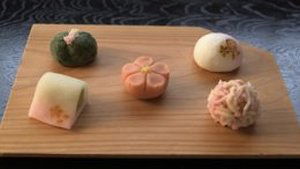
1. Cherry Blossoms
As a sign of spring, cherry blossoms have been cherished in Japanese culture for ages. Numerous designs were born, inspired by this beautiful Japanese flower called "Sakura". In our show we will be introducing some of the very special "Kimono" designs with layers of delicate colors to recreate the flower blossoming and artistic "Wagashi" inspired by scenery of spring mountains.

2. Light
At the studio we welcome Toemon Sano, a legend botanical garden designer from Kyoto with 16th generations' experiences that carries over 400 years of traditions, will guide us through the deep history and thoughts of Sakura designs that carried over for ages.
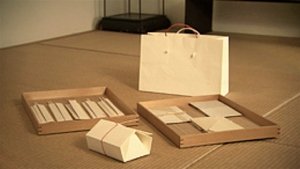
3. Folding
Origami, the world-famous Japanese art of folding paper, is perhaps the best known example of folding design, which is deeply embedded in Japanese culture. Today, exciting new frontiers in folding design are being explored. Computer-aided origami is leading to the creation of complex shapes from simple folds, and renowned Japanese fashion designer Issey Miyake is using folding to create garments. Our studio guest is Nobuhiro Yamaguchi, a graphic designer who studies the origins of origami in Japan's samurai-era gift-wrapping etiquette. In his own designs, he combines these traditional practices with some very contemporary flourishes. On this edition of Design Talks, we explore the many facets of Japanese folding design.

4. Sound Design
In Japan, the sounds of nature—the pitter-patter of rain, the trickling of a stream, blowing wind, chirping birds—are often associated with the changing seasons. Japanese in past ages would listen to these subtle sounds as they observed their surroundings with great sensitivity—they created a distinctly Japanese world of sound. Join us as we explore the history and tradition that gave birth to modern Japanese sound design. Our guest will be Hiroaki Ide, a sound space composer who is continually exploring the possibilities of sound.

5. MITATE
Today's topic on Design Talks is the art of mitate. In a mitate work, one object is used to visually represent another seemingly unrelated object. Examples of mitate include traditional Japanese gardens in which rocks and sand are used to represent water. The world of the Japanese tea ceremony is also full of mitate artistry. On this edition of Design Talks, we explore this unique Japanese art form with Yasuhiro Suzuki, an artist whose own works are often inspired by mitate.

6. Rain
Affected by the East Asian monsoon, Japan receives twice as much rain as the global average. Since ancient times, rain has been an important part of daily life in Japan. It is something to give thanks for, yet also something to fear. This week we take a look at some unique Japanese rain-related designs, and talk with guest John DiCesare, a designer from Canada who will join us as we take a deep look at the unique world of Japanese umbrellas, from ones made using traditional construction methods to more modern ones made of reusable plastic. We'll also hear from world famous architect Kengo Kuma about his views on the changing role of roofs in Japan. He'll also describe how he took inspiration from the depiction of rain in a famous Japanese woodblock print by Ando Hiroshige when he was designing the roof of Nakagawa-machi Bato Hiroshige Museum of Art, a prominent art museum.
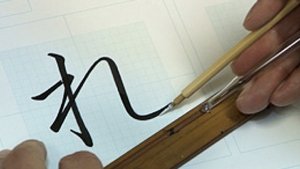
7. Japanese Typography
Our theme this time is Japanese typography. The Japanese writing system is exceptionally diverse. There are kanji -Chinese characters- and there are also hiragana and katakana, two syllabic scripts. All three are used constantly when writing Japanese, and the result is uniquely beautiful. Even people who do not understand the Japanese language simply love the look of Japanese writing. We welcome typeface designer Osamu Torinoumi into the studio to discuss how typeface design is all around us in everyday life, and what the Japanese people think about their remarkable writing system.

8. Paper
The unique evolution of washi (Japanese paper) took place amid Japan's rich natural surroundings and temperate climate. The unusual texture and strength of washi gave it a prominent role in daily life, and also made it an integral part of Japan's spiritual culture. This time, we are joined by washi designer Eriko Horiki, who shows us how she uses traditional handmade washi techniques in her work. In this age of electronic media, rediscover the beauty of paper.

9. Robot
Japanese robot technology leads the world, and this is especially true for humanoid robots - no other country can produce robots that move with such grace and sensitivity, inspiring affection by the way they look. Robot research today is advancing rapidly, not only for industrial applications, but also to develop robots for new fields such as medical treatment and caregiving. On today's program we welcome Tatsuya Matsui, a leading proponent of the importance of design in building a future where robots will live with us as an integral part of society.

10. Color
Ever feel that we're losing our appreciation for the full, immense range of colors found in nature? It worries Dai Fujiwara (Designer, Creative Director), and he's set out to reverse the trend. In this week's Design Talks we visit "Color Hunting", an exhibition in Tokyo directed by Fujiwara that reveals new possibilities in color and design. "Color-hunting" is Fujiwara's term for a process he developed of capturing undefined color variations he finds in the environment by mixing watercolors on the spot. We'll see how his "color-hunting" has inspired new creativity in the world of design.

11. Plants
Japan is a floral superpower. It is one of the world's top producers of fresh flowers, and plants from around the globe pass through its borders. Clearly marked seasons and a rich natural landscape have made plants a vital part of daily life in Japan. Flower artist Azuma Makoto joins our presenters in the studio to unravel the world of Japanese plant design. Discover traditional arts such as ikebana and bonsai, and learn about how they've influenced exciting new plant designs.
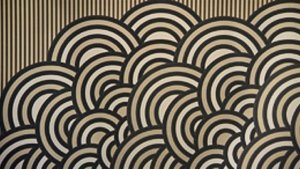
12. Wave
Japan is an island nation surrounded by ocean, and since ancient times the Japanese has been fascinated by the constantly changing face of the sea, created by the restless action of the waves. Artists strove to express the ever-changing form of the wave, and this had a great influence on Japanese design. In this issue, the artist Hiroko Takahashi reveals some of the design secrets used to depict waves in famous historical artworks by Katsushika Hokusai, Ogata Korin and others. We see the Japanese aesthetic sense in the use of geometrical design to capture the fleeting, transient nature of the wave.
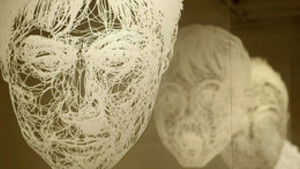
13. Cut
The act of cutting gives life and motion to a material. Cutting tools themselves also have aesthetic appeal: the Japanese katana sword evolved over hundreds of years into a kind of fine art. This time on DESIGN TALKS, we're joined by cut-out artist Risa Fukui, who explains how cutting can create beautiful designs. We'll also look at kaiseki cuisine, in which seasonal vegetables are cut into shapes that evoke the natural world, and at a blacksmith who creates beautiful scissors. Prepare to explore the centuries-long history of Japanese cutting designs.

14. Special Selections
Since it began in April, DESIGN TALKS has featured a fascinating variety of designs from Japan and explored the artistic qualities that make them uniquely Japanese. Today we bring you highlights from all the episodes up until now. What discoveries did our hosts Andy and Shaula make during the program's first episodes? Join us as we take a second, deeper look at a wide range of Japanese designs.
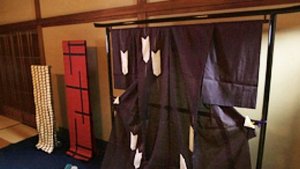
15. MATOU
The Japanese verb "matou" means "be clothed in." It doesn't simply mean to wear something-it means to wear something beautifully. This time, our guest is Genbei Yamaguchi, the 10th-generation head of a store that has sold obi, the sashes worn with kimono, for over 270 years. He will help us unravel the mysteries of how designs are made with matou in mind. From traditional Japanese clothing to the latest high fashion, we'll show you how today's designers are rediscovering the meaning of matou.
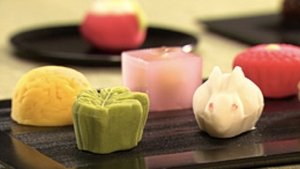
16. Wagashi (Japanese Confectionery)
Wagashi, Japanese confectionery, features designs that reflect the seasons - cherry blossoms in spring, for example, or the changing leaves in autumn. Even though most wagashi are made with the same basic ingredients (mainly sweet beans and rice powder), they exist in endless variety. Today's guest is Soshin Kimura, a tea master whose work is intimately connected with wagashi. Join us as we explore the world of wagashi, from traditional techniques to the latest designs.

17. Wrapping
For a very long time in Japan, wrapping an object has been a way of showing that it is valued. One emblem of Japanese wrapping culture is the furoshiki, a kind of traditional cloth wrap that was used to bundle all sorts of objects. These wraps not only made things easier to carry, but also served as gorgeous decoration. This time our guest is Keiko Hirano, who will talk about the beauty of Japanese wrapping designs. Wrapping offers some deep insights into unwrapping the Japanese way of life.
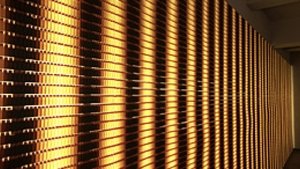
18. Setouchi Triennale 2013 - Part 1: Community Empowerment by Design
The Setouchi Triennale is an art event held on 12 islands in Japan's Seto Inland Sea every 3 years. At each Triennale, there are Spring, Summer and Fall shows. This year, the island of Shodoshima is the stage for a number of experimental projects that all share the theme of "design for revitalizing local areas". In a 3-part series, host Andrea Pompilio will visit the art installations there - this first installment will focus on "community design". Join us as we take a close look at projects that are using design to change towns, and the lives of local residents, for the better.
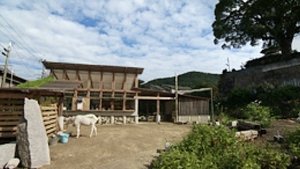
19. Setouchi Triennale 2013 - Part 2: Community Space Design
The Setouchi Triennale is an art event held on 12 islands in Japan's Seto Inland Sea every 3 years. At each Triennale, there are Spring, Summer and Fall shows. This year, the island of Shodoshima was the stage for a number of practical projects that shared the theme of "design for revitalizing local areas". Our host Andrea Pompilio visited the island to see these projects, and we are presenting his report as a 3-part special. In this program, the 2nd part, he looks at an innovative public space that's bringing people together: Umaki Camp. It's a self-build, low-cost design concept that is acting as a new style of town hall. Umaki Camp has helped enliven local residents - tune in to find out how!

20. Setouchi Triennale 2013 - Part 3: Discover Living Design
The Setouchi Triennale is an art event held on 12 islands in Japan's Seto Inland Sea every 3 years. At each Triennale, there are Spring, Summer and Fall shows. This year, the island of Shodoshima was the stage for a number of practical projects that shared the theme of "design for revitalizing local areas". Our host Andrea Pompilio visited the island to see these projects, and we are presenting his report as a 3-part special. In this, the 3rd part, he looks at "The Island Lab", an art project initiated by a creative unit known as graf. The project began as an effort to reexamine the "shapes" of Shodoshima's history. Tune in to find out how graf is exploring a world of new and unique design!

21. Wood
A full two-thirds of Japan is covered in lush forest. Trees and woods have played an integral role in Japanese society since time immemorial. It's said that the spirits and gods who made their homes in trees in ancient times continue to live in them to this day. This time we welcome designer Makoto Koizumi into the studio, as we take a look at a wide variety of woodwork. The beauty of wood can express warmth, tranquility, even nostalgia for simpler times. Join us as we explore the culture of woodworking, and discover what wood means to Japanese designers today.
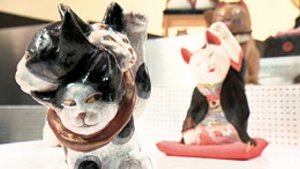
22. Cats
Cat is one of the most beloved animals in the world. In Japan, there is a long history of using cats in art, from the playful felines that often appear in ukiyo-e woodblock prints, to the famous "sleeping cat" carving found at the shrine Nikko Tosho-gu. On this episode of DESIGN TALKS, we investigate what cats mean to Japanese designers. Our guest, photographer Kanji Bando, has made a career of photographing cats. Why are cats so appealing? Is it their ever-changing moods? Is it that they seem so free? Is it their soft yet agile bodies? Join us as we look at all kinds of cute cat designs!
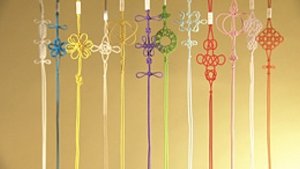
23. MUSUBU: Tying Things
Since ancient times, boundaries of shrines and other holy places in Japan have been marked off by sacred ropes called shimenawa. Mizuhiki is the custom - still followed today - of conveying sentiments ranging from congratulations to condolences by tying knotted designs in thin cords to seal the message. With our guest, knot scholar Miyuki Sekine, we look at the beauty that can be created by knotting a single cord, and explore the influences on Japanese design of old traditions connected with tying knots and ropes.
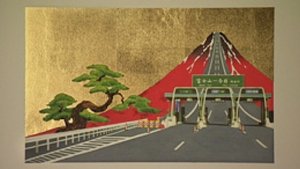
24. Mt. Fuji
Japan's highest and most famous peak, Mt. Fuji has inspired artists and poets since time immemorial. It occupies a special place in the hearts of Japanese people, and it holds great religious significance. These are some of the main reasons why Mt. Fuji was recently named a UNESCO World Heritage Site. This week together with our guest, the well-known translator and artist Peter MacMillan, we'll be looking at the multitude of designs inspired by Mt. Fuji as we investigate the Japanese fascination with this majestic mountain.
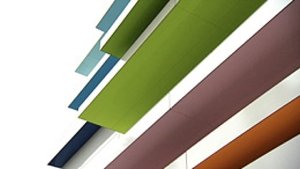
25. KASANE
The cultural effects of the design concept known as 'kasane', or layering things, can be seen everywhere in Japan, visible in the sliding doors, windows and folding screens of traditional houses, and in everyday items such as nesting sets of dishes. Our studio guest, architect and designer Emmanuelle Moureaux, helps us explore the special beauty produced using kasane and the aesthetic philosophy behind this focus on layered design.
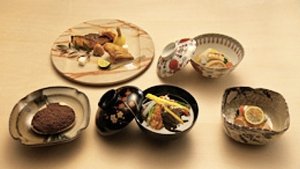
26. Washoku
Washoku, traditional Japanese cuisine, is characterized by its uncompromising attention to seasonal ingredients, taste and presentation. In 2013, it was registered as a UNESCO Intangible Cultural Heritage. On this episode of DESIGN TALKS, our hosts visit a restaurant owned by celebrity chef Toru Okuda to explore the exquisite beauty of Japanese design as reflected in washoku. They'll also learn how to prepare a basic meal of ichiju-sansai (1 soup and 3 side dishes) that tastes as good as it looks. Bon Appétit!
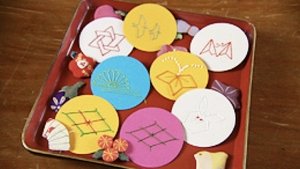
27. Pray
Since ancient times, the Japanese have believed in that gods, or kami, exist everywhere in nature. Prayer was a way to express gratitude for the sun, rain and other blessings of nature, and this prayerful spirit manifested itself in many traditional designs. Our guest this week on DESIGN TALKS is Nobuhiro Nishitakatsuji, deputy chief priest of the Dazaifu Tenmangu Shrine in Kyushu. Together with this young and dynamic priest, who is full of ideas for making his centuries-old shrine relevant to people today, we'll explore the concept of prayer in Japanese design.

28. Long Life Design
Too much stuff. Too much information. Constantly consuming. Constantly needing to know what's happening right now. Sound familiar? In response to our current lifestyles, a man named Kenmei Nagaoka has created a new concept that he calls "long life design". It seeks to redefine our relationship with our possessions, and to reevaluate how we experience design. This time, we focus on how Nagaoka is pursuing his innovative philosophy in Japan.

29. Special Selections: Part 2
DESIGN TALKS has featured a fascinating variety of designs from Japan and explored the artistic qualities that make them uniquely Japanese. Today we bring you highlights from all the episodes since September 2013. What discoveries did our hosts Andy and Shaula make during these first episodes? Join us as we take a second, deeper look at a wide range of Japanese designs.
